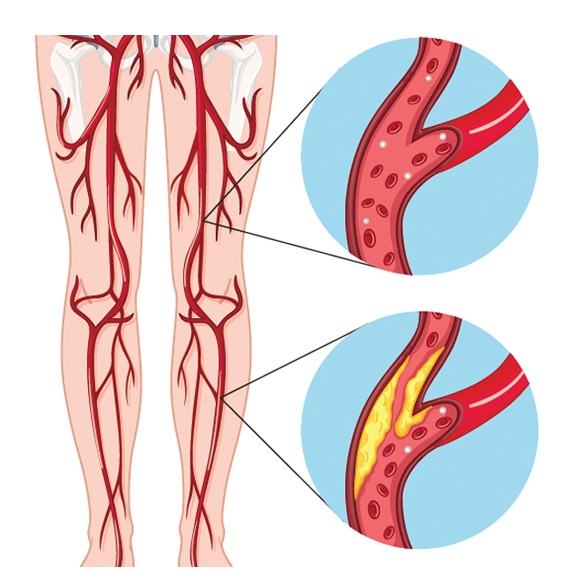
Peripheral Artery Disease
When leg arteries become narrowed or blocked by plaque it causes peripheral Arterial Disease (PAD), a condition that raises the risk of heart attack, stroke, leg amputation and death. As patients are unaware of this condition generally, PAD remains under-diagnosed and under-treated. In PAD, characteristically, there is a reduction in blood flow to the lower extremities due to plaque build-up in the leg arteries (also known as atherosclerosis). A combination of fats, cholesterol and other substances constitutes plaque. Size of plaque can grow to significantly reduce blood flow through an artery.
Blood flow to the legs and feet is reduced when leg arteries are hardened and clogged. Peripheral arteries remain blocked, completely or partially, and cause pain, changes in skin color and temperature, sores or ulcers and difficulty walking. PAD, if left untreated, can lead to Critical Limb Ischemia (CLI), a condition where not enough blood is being delivered to the leg to keep the tissue alive. Gangrene ensues due to total loss of circulation to the legs and feet leading to amputation. Hardened arteries, in addition, found in people with PAD are a sign that they are likely to have hardened and narrowed arteries to the heart and the brain. That is why people with PAD are at high risk of having a heart attack or a stroke. They may become disabled and not be able to go to work, with poor quality of life.


